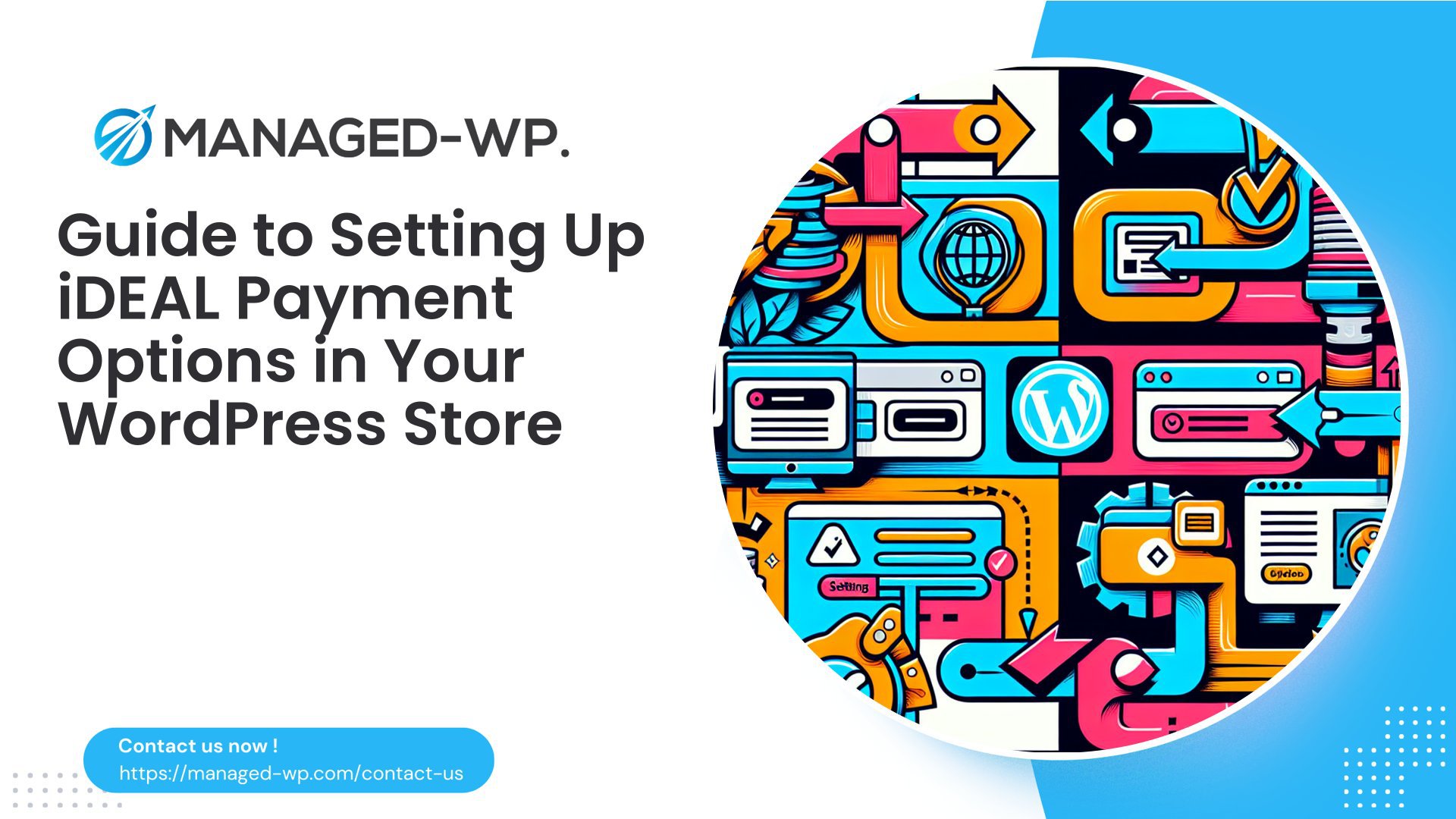在当今的数字环境中,在线形象至关重要,企业和个人都依赖他们的网站与目标受众建立联系并推动他们的成功。WordPress 是最受欢迎和最广泛使用的网站创建和管理平台之一。凭借其用户友好的界面和广泛的功能,WordPress 已成为全球网站所有者的首选。
但是,与任何数字资产一样,WordPress 网站的安全性和完整性至关重要。突然崩溃、恶意黑客攻击或意外删除都可能导致宝贵数据和无数小时的辛勤工作丢失。这就是 WordPress 备份和更新 发挥作用。
通过实施强大的备份和更新策略,您可以确保 WordPress 网站的安全性和顺畅运行。定期备份您的网站可以让您在出现任何问题时将其恢复到以前的版本,同时让您的网站保持最新状态,使用 WordPress 更新提供的最新安全补丁和功能增强功能可以提高其整体性能并保护其免受潜在漏洞的影响。
在本文中,我们将深入研究 WordPress 备份和更新的世界,探讨当今数字时代数据保护的重要性以及 WordPress 流行的影响。我们还将介绍可用的顶级备份插件,讨论设置自动 WordPress 更新的好处,并研究 BackupBuddy 等全面的备份解决方案。此外,我们将探讨主动更新管理的必要性以及在上线前在临时网站上测试更新的优势。最后,我们将讨论备份的远程存储选项。
因此,无论您是经验丰富的 WordPress 用户还是刚刚入门的用户,本文旨在通过简化 WordPress 备份和更新流程来减轻您的担忧,帮助您保护您的网站并确保其在不断发展的数字环境中顺利运行。让我们开始吧!
🔒💾✨
WordPress 备份的重要性
在这个数字信息泛滥的时代,数据保护变得越来越重要。随着网络威胁和意外数据丢失的增加,企业和个人必须采取主动措施来保护其宝贵的数据。这包括实施强大的备份策略,尤其是对于基于 WordPress 构建的网站。
数字时代的数据保护
🔐 截至 2023 年,WordPress 为超过 40% 的网站提供支持,因此数据保护至关重要。这个流行的内容管理系统是恶意攻击的主要目标,包括黑客攻击、恶意软件感染和数据泄露。此外,由于人为错误或技术故障导致的意外数据丢失可能会导致灾难性的后果。丢失有价值的网站内容、客户信息或业务数据会严重影响您的声誉、收入和整体成功。
随着威胁形势的不断演变,建立可靠的备份系统对于确保 WordPress 网站的连续性和数据完整性至关重要。以下是备份应成为重中之重的几个原因:
- 灾难恢复: 定期备份 WordPress 网站,可以在发生网络攻击、服务器故障或其他意外事件时快速有效地进行灾难恢复。有了备份,您可以快速将网站恢复到以前的状态,最大限度地减少停机时间并最大限度地减少业务中断。
- 防止人为错误: 我们都容易犯错,网站所有者也不例外。意外删除重要文件或进行错误更改可能会造成严重后果。准备好备份可以让您恢复到网站的先前版本并撤消任何意外更改。
- 恶意软件和黑客恢复: 网络安全威胁无处不在,即使是最安全的网站也可能成为黑客攻击或恶意软件感染的受害者。如果您的网站受到攻击,从干净的备份中恢复通常是消除恶意代码并恢复网站完整性的最有效方法。
请记住,备份只有在最新且易于访问的情况下才有价值。定期安排自动备份并将其存储在异地或安全的云存储中,以确保您的 WordPress 网站得到充分保护。
WordPress 的流行及其影响
WordPress 的流行并非偶然。其用户友好的界面、庞大的插件库、可自定义的主题和强大的社区支持使其成为个人和企业的首选。然而,WordPress 的广泛采用也意味着更高的针对性攻击风险。
🔒 必须了解的是,WordPress 核心更新、插件更新和主题更新都附带了解决已知漏洞的重要安全修复程序。如果未能及时更新 WordPress 网站,则可能会面临潜在的安全漏洞。定期备份可以作为额外的安全网,如果出现安全问题,您可以恢复到网站的安全版本。
采取主动的方法进行 WordPress 维护和备份对于您的在线业务的顺利运行至关重要。通过实施全面的备份策略,您可以防止潜在的数据丢失,减轻安全事件的影响并维护网站的完整性。
🌐 要了解有关小企业主必备的 WordPress 维护技能的更多信息,请查看 这篇信息丰富的文章.
顶级 WordPress 备份插件
在当今的数字时代,网站安全至关重要,为您的 WordPress 网站提供可靠的备份解决方案至关重要。无论是为了防止数据丢失、网站崩溃还是恶意软件攻击,备份插件都可以成为救星。由于有众多可用选项,选择适合您需求的选项可能令人不知所措。不要害怕!我们整理了一份顶级 WordPress 备份插件列表,以简化您的决策过程。
🥇 UpdraftPlus
说到备份插件,UpdraftPlus 是无可争议的领导者,在全球拥有超过 300 万用户。凭借其用户友好的界面和强大的功能,UpdraftPlus 成为 WordPress 网站所有者的热门选择也就不足为奇了。以下是使其脱颖而出的一些关键功能:
- 易于使用: UpdraftPlus 提供了一个简单而直观的界面,即使是初学者也可以轻松导航和设置备份。
- 计划备份: 使用 UpdraftPlus,您可以按照适合您需求的时间表自动执行备份,确保您的数据始终受到保护。
- 多种存储选项: 该插件支持多种远程存储选项,包括 Dropbox、Google Drive、Amazon S3 等。您可以选择最适合您的一种。
- 免费版和高级版: UpdraftPlus 提供免费版本,其中包含基本备份功能,可供所有人使用。若要使用增量备份和克隆/迁移等高级功能,您可以选择高级版本。
🥈 复印机
如果您追求的是速度和简便性,Duplicator 就是您的不二之选。这款插件的活跃安装量超过 100 万次,因其效率和效果而声名鹊起。以下是它的独特之处:
- 轻松的站点迁移: Duplicator 可以非常轻松地将您的 WordPress 网站从一个域迁移到另一个域,或者从一个托管服务提供商迁移到另一个托管服务提供商。
- 快速且轻量: Duplicator 以其速度快和轻量级的特性而闻名,可以实现快速备份和顺畅的站点传输。
- 零停机时间: 使用 Duplicator,您不必担心您的网站在迁移过程中离线。它确保无缝过渡,不会有任何中断。
🥉 返回WPup
对于预算紧张的用户来说,BackWPup 是一个绝佳的选择,因为它免费提供完整的备份。它的功能集可能不如其他同类产品那么丰富,但它可以完成工作。以下是它的主要功能:
- 简单: BackWPup 凭借其用户友好的界面使事情变得简单,使初学者可以轻松设置和管理他们的备份。
- 灵活的备份选项: 该插件允许您从不同的备份选项中进行选择,例如完整备份、数据库备份和自定义备份,让您更好地控制您选择备份的内容。
- 备份到多个目的地: BackWPup 支持备份到各种目的地,包括 Dropbox、Google Drive、FTP 和电子邮件,确保您拥有宝贵数据的多个副本。
这些只是可用的顶级 WordPress 备份插件中的一小部分。其他值得注意的选项包括 WP Umbrella、WP Vivid 和 BlogVault,它们都在 2024 年获得了好评。
请记住,投资可靠的备份插件就像为您的网站购买保险单一样。它确保您在发生任何不可预见的事故时始终能够恢复数据。选择符合您需求的插件,然后安心入睡,因为您的 WordPress 网站是安全且受到保护的。
设置自动 WordPress 更新
保持 WordPress 网站更新是否已成为一项繁琐的任务?您是否厌倦了手动安装更新并冒着网站安全和性能的风险?好吧,不用再担心了!设置自动 WordPress 更新可以简化和优化您的网站维护流程,让您专注于业务中更重要的方面。
定期更新 WordPress 网站至关重要,原因如下。它有助于保护您的网站免受安全漏洞的侵害,提高其性能,并确保与最新功能和插件兼容。但是,手动更新 WordPress、主题和插件可能非常耗时,而且容易出现人为错误。这时,自动更新就可以派上用场了!
启用自动更新
为你的 WordPress 网站启用自动更新是一个简单的过程。具体操作如下:
- 备份您的网站:在进行任何更改之前,最好先备份您的 WordPress 网站。这样,如果在更新过程中出现任何问题,您可以轻松地将网站恢复到以前的状态。
- 更新 WordPress 核心:首先,请确保您运行的是最新版本的 WordPress。您可以在 WordPress 仪表板的“更新”部分下检查更新。如果有可用更新,请继续更新 WordPress 核心。
- 启用插件和主题的自动更新:默认情况下,WordPress 仅提供针对 WordPress 核心次要版本的自动更新。要启用插件和主题的自动更新,您可以使用“Easy Updates Manager”或“Advanced Automatic Updates”等插件。这些插件允许您根据自己的偏好自定义更新设置。
- 配置更新设置:安装自动更新插件后,导航到其设置页面。在这里,您可以配置各种设置,例如启用或禁用插件、主题和主要 WordPress 版本的更新。您还可以选择在安装更新时接收电子邮件通知。
- 定期监控更新:即使启用了自动更新,也必须定期监控您的网站,以防更新后出现任何冲突或问题。更新后密切关注网站的性能和功能将有助于确保一切顺利运行。
启用自动更新后,您可以放心,因为您的 WordPress 网站将毫不费力地保持最新状态。这不仅可以节省您的时间,还有助于确保您的网站安全并实现最佳性能。
定期备份的重要性
在当今的数字时代,数据在个人和专业环境中都发挥着至关重要的作用。从珍贵的家庭照片到重要的商业文件,我们的生活越来越多地以数字格式存储。然而,尽管数字化很方便,但这种依赖也使我们面临数据丢失的风险。无论是由于硬件故障、意外删除还是网络威胁,丢失宝贵的数据都可能是一场噩梦。
这就是定期备份的作用所在。备份数据可确保您拥有一份安全存储的副本,以便在发生意外事件时可以恢复。但定期备份为何如此重要?让我们仔细看看。
防止数据丢失
定期备份就像一份保险单,可以保护您免受数据丢失的破坏性影响。以下是它们必不可少的原因:
- 防止硬件故障: 计算机和存储设备可能会意外发生故障,导致您无法访问宝贵的数据。通过定期备份文件,您可以创建一个故障保护机制,即使硬件出现故障,您也可以恢复所有内容。
- 防止意外删除: 很容易意外删除或覆盖重要文件,尤其是在处理大量数据时。备份可确保即使犯了错误,也可以轻松恢复丢失的文件。
- 防御网络威胁: 网络安全形势不断发展,恶意软件、勒索软件和病毒等网络威胁也变得越来越复杂。定期备份可提供不受影响的数据副本,即使数据被盗也可以恢复,从而为抵御这些威胁提供一道防线。
定期备份不是一次性任务;应持续执行以确保您的数据始终保持最新状态并易于恢复。备份频率可能取决于数据的性质及其更新频率。例如,如果您运营的网站或博客每天都会更新内容,则最好每天安排备份。另一方面,如果您的数据相对静态,每周备份可能就足够了。请记住,在数据丢失方面,预防总是比治疗更好。
总之,定期备份是保护您的宝贵数据免受意外情况影响的必要做法。它们让您高枕无忧,因为您知道您的信息是安全的,并且可以在需要时快速恢复。所以,不要等到为时已晚。现在就采取必要的措施,通过定期备份来保护您的数字资产。
全面的备份解决方案:了解 BackupBuddy
🔒 使用 BackupBuddy 的综合备份解决方案保护您的网站数据
在当今的数字世界中,确保网站数据的安全和保护至关重要。一次不幸的事件(例如服务器崩溃或恶意攻击)可能会导致关键信息丢失。这就是 BackupBuddy 的作用所在。🚀
BackupBuddy 提供一系列全面的备份解决方案,旨在让您在网站数据方面高枕无忧。使用 BackupBuddy,您可以保护从整个网站到主题和插件的所有内容。让我们仔细看看 BackupBuddy 提供的功能。🧐
整个站点备份
BackupBuddy 的突出功能之一是它能够为整个 WordPress 网站创建完整备份。这意味着不仅您的帖子和页面受到保护,而且您的媒体库文件、数据库、插件甚至主题设置也受到保护。通过对网站进行完整备份,您可以在发生任何意外事件时轻松恢复所有内容。💡
主题和插件备份
BackupBuddy 还允许您单独备份主题和插件。当您对主题和插件进行了自定义或修改时,此功能非常有用。无论您花了数小时完善网站设计,还是自定义插件设置以满足您的独特需求,BackupBuddy 都能确保您轻松恢复它们,从而节省您宝贵的时间和精力。💪
计划备份
BackupBuddy 通过提供便捷的定时备份功能,免去了手动备份的麻烦。您可以灵活地选择网站备份的频率,无论是每日、每周还是每月。使用定时备份,您可以设置并忘记它,因为您知道您的网站数据会受到定期保护。⌛
存储备份
BackupBuddy 提供多种备份存储选项,确保您的数据安全且随时可访问。您可以将备份存储在远程位置,例如 Dropbox、Amazon S3、Google Drive,甚至可以存储在其安全的 BackupBuddy Stash 服务上。这些异地存储选项可保护您的备份免受任何潜在的服务器故障或数据丢失的影响。🗂️
轻松恢复
如果不幸发生网站崩溃或数据丢失,BackupBuddy 可让恢复过程变得轻而易举。只需单击几下,您就可以轻松恢复整个网站或有选择地恢复网站的特定部分,例如帖子、页面、主题或插件。这个用户友好的界面确保即使没有技术专业知识的人也可以快速有效地恢复他们的网站。🔄
BackupBuddy 提供全面的备份解决方案,旨在保护您的网站数据。BackupBuddy 能够为整个网站创建完整备份,并为主题和插件创建单独备份,从而确保您对网站的各个方面都拥有必要的保护。定时备份的便利性和各种存储选项进一步增强了数据的安全性。如果发生任何意外,BackupBuddy 的简单恢复过程可确保您的网站立即恢复正常运行。不要让您的网站数据处于危险之中 - 依靠 BackupBuddy 提供全面的备份解决方案。💻
脚注
本节无需脚注。
主动更新管理的必要性
在当今的数字环境中,保持网站更新对于维护其安全性、性能和整体用户体验至关重要。过时的插件和主题可能会导致安全漏洞并影响网站性能。为了防范潜在风险并确保顺利运行,主动更新管理至关重要。
🔒 安全增强
更新插件、主题和 CMS(内容管理系统)软件有助于保护您的网站免受网络威胁。黑客经常利用过时软件中的漏洞来获取未经授权的访问或注入恶意代码。通过定期更新,您可以解决这些漏洞并保护您网站的敏感信息和用户数据。
🚀 提升性能
过时的软件无法在最新的网络技术和标准上高效运行。更新通常包括性能增强和错误修复,以确保您的网站运行顺畅且加载速度快。这种优化的性能直接影响用户体验,并有助于提高用户参与度、延长访问时长和提高转化率。
🔌 与新功能的兼容性
随着技术的快速发展,新的特性和功能不断涌现,以提高网站性能和用户参与度。定期更新您的插件、主题和 CMS 可确保与这些新功能兼容。让您的网站保持最新状态可确保您不会错过可以提升您在线形象的最新趋势和功能。
🔨 错误修复和稳定性
软件中经常出现错误,过时的插件或主题可能包含已知问题。开发人员经常发布更新来修复错误并提高稳定性,从而降低网站崩溃或出错的风险。通过积极管理更新,您可以最大限度地减少潜在的中断并为访问者提供无缝体验。
🚧 与未来更新的兼容性
通过持续更新插件、主题和 CMS,您可以为将来的更新铺平道路。跳过多次更新可能会导致后续兼容性问题,从而导致更新过程更加复杂且耗时。定期更新可确保更顺畅的过渡,并允许您逐步利用新功能和安全增强功能。
✅ 如何执行主动更新管理
主动更新管理涉及随时了解插件、主题和 CMS 的更新。以下是一些可实施的最佳做法:
- 尽可能启用插件和主题的自动更新。
- 定期手动检查更新并及时启动。
- 在执行更新之前,请确保您已拥有可靠的备份解决方案。
- 在将更新应用到您的实时站点之前,请先在暂存环境中测试更新。
- 随时了解您的软件的最新安全漏洞和更新。
总体而言,主动更新管理对于维护网站的安全性、性能和用户体验至关重要。通过保持主动性并保持软件更新,您可以保护网站免受潜在威胁,确保最佳性能,并利用最新功能和错误修复。
暂存网站:上线前测试更新
想象一下这样的场景:您花了几个小时精心设计您的网站,完善每一个细节,并确保无缝的用户体验。现在,您很兴奋地推出一些重大更新并向您的受众介绍新功能。但是等等!您是否应该直接深入研究并将这些更改直接应用到您的实时网站上?别急!这就是暂存网站发挥作用的地方。
什么是暂存站点?
暂存站点是 复制品 您的实时网站,单独托管,您可以在其中测试新的更新、更改和功能,而不会影响实时网站。将其视为一个沙盒,您可以在其中进行实验而不必担心破坏任何东西。
为什么要使用暂存站点?
在应用重大更新之前使用临时网站进行测试可以防止实时网站中断并为您省去潜在的麻烦。以下是几个主要好处:
- 测试更新: 使用临时站点,您可以在受控环境中测试更新、插件、主题和其他更改。这样您就可以在更改生效之前识别任何问题或冲突并修复它们。
- 最大程度减少停机时间: 在临时网站上测试更新可确保您的实时网站不受干扰地供受众访问。您可以在任何冲突或错误影响用户体验之前解决它们。
- 可视化变化: 暂存网站可让您直观地看到更新在实时网站上的显示效果。您可以在公开之前检查设计、布局和功能是否符合您的期望。
如何设立暂存站点?
设置临时网站可能因托管服务提供商和网站平台而异。以下是帮助您入门的一般概述:
- 选择托管服务提供商: 寻找提供临时网站功能的托管服务提供商。许多提供商都将此功能作为其托管计划的一部分提供。
- 创建单独的暂存环境: 选择托管服务提供商后,请按照他们的说明创建暂存环境。这通常涉及将您的实时网站复制到单独的暂存服务器。
- 测试更新: 一旦您的暂存网站启动并运行,您就可以开始测试更新、进行更改和试验,而不会影响您的实时网站。
记得备份:
虽然使用临时网站可以大大降低实时网站中断的风险,但定期备份实时网站和临时网站至关重要。这可确保您拥有最新的备份,以防万一出现问题。
总之,使用临时站点是上线前测试更新的必要做法。它可让您确保流畅的用户体验、最大限度地减少停机时间并解决可能出现的任何问题。因此,在对网站进行重大更改之前,请花点时间设置临时站点并享受无忧更新流程带来的好处。🚀
远程存储备份
在当今的数字时代,确保数据的安全性和可访问性至关重要。实现此目标的一种方法是利用远程存储进行备份。随着技术的进步,大多数备份插件现在都提供在远程位置(如 Google Drive 或 Dropbox)自动存储的功能。
🔐远程存储提供了多种好处,例如:
- 冗余:将备份存储在远程位置可增加一层额外的保护。如果发生任何不可预见的事件,如硬件故障、自然灾害,甚至人为错误,您可以放心,因为您的数据在远程位置是安全的。
- 无障碍设施:使用远程存储,您可以从任何有互联网连接的地方访问备份。您不再需要完全依赖物理存储设备。这为远程团队、自由职业者或任何需要随时随地访问备份的人提供了便利。
- 自动备份:如今许多备份插件都配备了自动备份功能。这意味着您可以为备份设置时间表,并且它们将无缝上传到您的远程存储位置,而无需任何手动干预。它消除了手动备份的麻烦,并确保您的数据始终是最新的。
为了更好地理解远程存储对于备份的好处,让我们看一下本地存储和远程存储之间的比较:
| 本地存储 | 远程存储 |
|---|---|
| 存储容量有限 | 提供充足的存储空间,通常具有可扩展的选项 |
| 容易受到物理损坏或丢失 | 提供额外的保护,防止物理损坏或丢失 |
| 需要手动备份 | 支持自动备份,方便使用 |
| 可访问性有限 | 可以从任何有互联网接入的地方轻松访问 |
如您所见,远程存储备份比传统的本地存储方法具有明显的优势。无论您是小企业主、网络开发人员还是希望保护宝贵数据的个人,使用远程存储都是明智之举。
💡 专业提示:选择远程存储提供商时,请考虑存储容量、定价计划、安全功能(如加密)以及与所选备份插件的集成选项等因素。这将帮助您找到满足您特定需求的最佳解决方案。
总之,远程存储备份提供了增强的安全性、可访问性和自动化。通过利用远程存储,您可以确保数据的安全,并放心地知道您的备份在需要时可以轻松访问。因此,请利用这项技术并保护您的宝贵信息。
结论
总之,确保您的 WordPress 网站受到定期备份和最新更新的保护对于维护其安全性和功能至关重要。通过实施可靠的备份插件(如 UpdraftPlus 或 Duplicator),您可以保护您的宝贵数据并在发生任何意外事件时轻松恢复它。此外,设置自动更新并定期在登台网站上测试它们可以帮助您在上线之前识别和解决任何兼容性问题。并且不要忘记远程存储选项,以确保您的备份安全且可访问。
在 Managed-WP,我们了解简化备份和更新对您的 WordPress 网站的重要性。我们的高级托管 WordPress 云托管平台提供全面的备份管理、主动监控和专家支持,以确保您的网站保持安全和最新状态。借助我们的服务,您可以专注于创造卓越的数字体验,而我们负责处理基础设施和技术方面。使用 Managed-WP.™ 体验自由和安心 了解更多 关于我们的服务以及我们如何简化您的 WordPress 体验。
常见问题
- 为什么我需要备份我的 WordPress 网站?
备份您的 WordPress 网站对于保护您的数据至关重要,并确保您可以在发生数据丢失、黑客攻击、服务器问题或其他紧急情况时轻松恢复您的网站。
- 备份 WordPress 网站的最佳方法是什么?
备份 WordPress 网站最推荐的方法是使用可靠的备份插件。它允许您安排定期备份、安全存储备份并在需要时轻松恢复您的网站。
- 我应该多久备份一次我的 WordPress 网站?
建议定期备份您的 WordPress 网站,最好是每天或每周备份一次,具体取决于您更新网站内容的频率。您更改的频率越高,备份的频率就应该越高。
- 为什么我应该更新我的 WordPress 插件和主题?
更新您的 WordPress 插件和主题对于提高您网站的安全性、添加新功能、修复错误以及确保与最新版本的 WordPress 兼容至关重要。
- 更新 WordPress 插件和主题安全吗?
一般来说,只要遵循最佳实践,例如创建备份、检查兼容性以及首先在暂存网站上执行更新,就可以安全地更新 WordPress 插件和主题。但是,始终建议在每次更新后谨慎行事并进行测试。



















